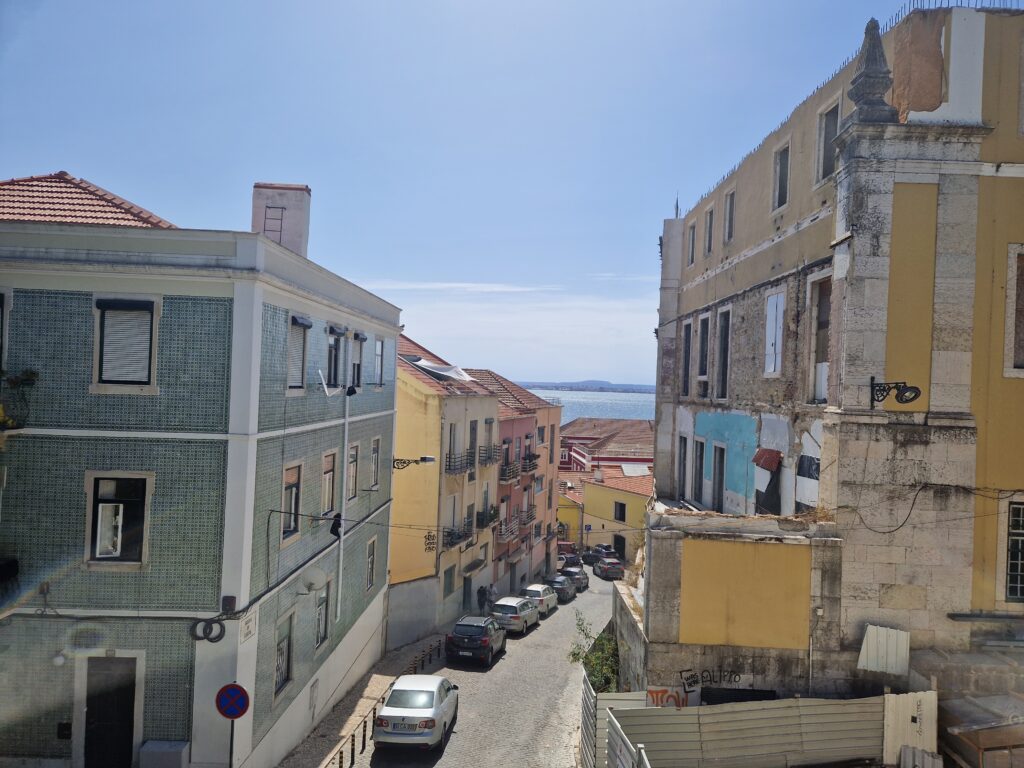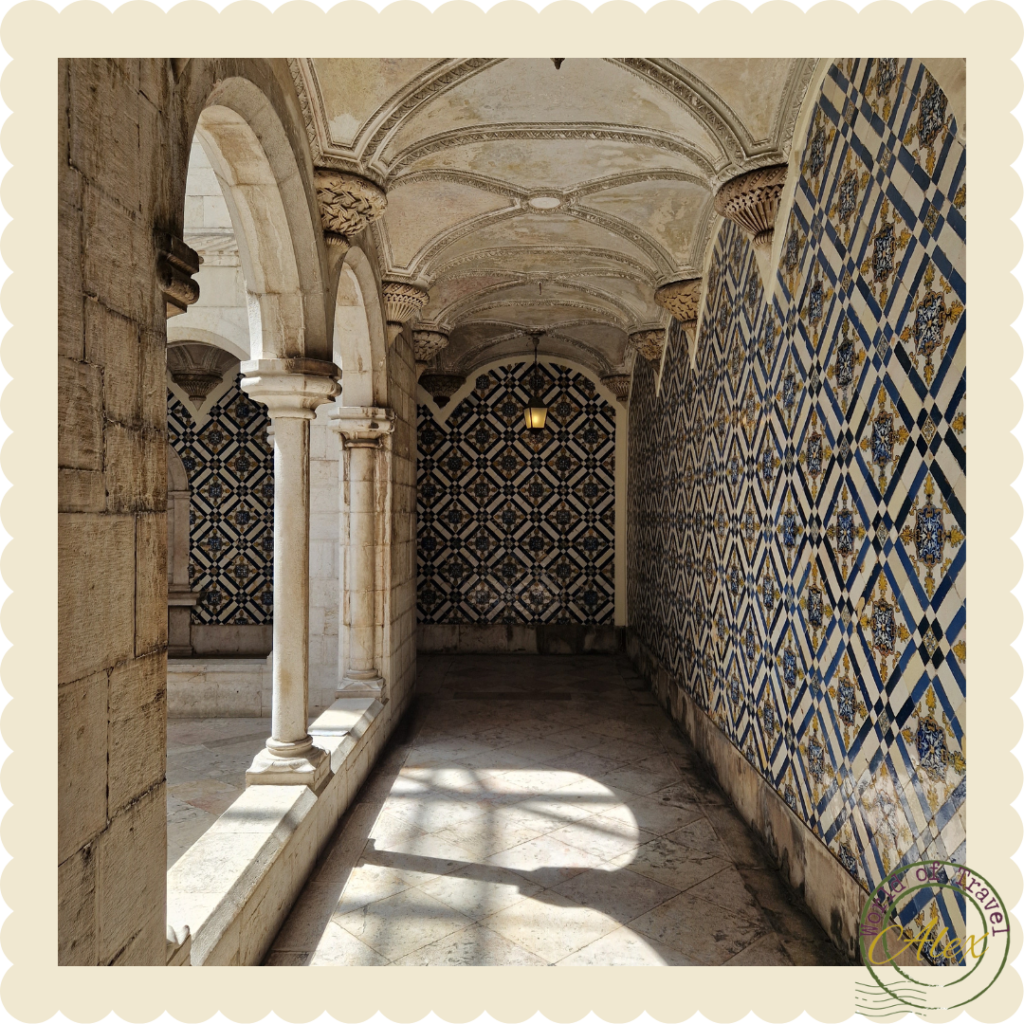Visit Lisbon:
Must-See Historic Places with Practical Tips on the Lisbon Card and Public Transport
Lisbon is the beautiful capital of Portugal. Here is a guide that will help you on your next visit.

Queen of the Sea
Lisbon is situated on the River Tagus in Portugal. It is well worth a visit, and it offers an amazing atmosphere, beautiful buildings, good food and a large variety of museums and monuments, so you will never be without something to explore. Here is a guide to some places that you should consider visit on your next trip there.
National Tile Museum
The National Tile Museum is located in an old 16th century monastery which setts a beautiful backdrop and stunning photos. It will take you on a journey thru the history of the Portuguese tile – azulejos. The Museum is a bit out of the city centre, but easily accessible by bus.
National Palace of Ajuda
The former Royal Palace for the Portuguese Royal Family has been beautifully restored to its former glory. Here you can wonder around in this beautiful late 18th- early 19th century Baroque Palace. The Palace holds a great selection of formal and private rooms.
Royal Treasury Museum
The Royal Treasury is a modern museum, specially built to hold the Portugese crown jewels and other objects. You will step into a large safe that will take you thru several floors with beautiful showcasing of jewels and object worn and belonged to the Portugese Royal Family. The building is in connection to the National Palace and you will have time to visit both on the same day. Just the building itself is such a fun experience.
Jerónimos Monastery
No visit to Lisbon is complete without a stop at the majestic Jerónimos Monastery. This UNESCO World Heritage Site boasts stunning 16th century Manueline architecture that would take over 100 years to build. As the monastery survived the 1755 earthquake, its beautiful two floor cloister is open for the public to explore.
Carmo Convent
Carmo Archaeological Museum is an open-air museum in the ruins of Santa Maria do Carmo Convent. The building of the church started in 1389, and it was considered one of Lisbon’s most beautiful churches until it got destroyed by the 1755 earthquake.
The Carmo Archaeological Museum has used the church as a museum since1864. The intention was to hold an exhibition of important sculptures from old and ruined buildings and from the old church itself.
Castelo de São Jorge
From its location high above Lisbon, the Castelo de São Jorge offers stunning panoramic views of Lisbon, and is with a visit just to get access to the viewpoint over the city. The medieval ruin castle has a long historical significance in Lisbon’s history and you can wonder around crenelated walls, archaeological sites, gardens and visit the castle’s peacock population.
Public Transport
Navigating Lisbon
To make the most of your cultural exploration, take advantage of Lisbon’s efficient public transport system. Trams, buses, and the metro network seamlessly connect to the city, providing a convenient and affordable way to reach your desired destinations. The Viva Carnd is a rechargeable card that works on most transport. The underground is not large and easy to navigate. Single journeys is €1.65 and you can also use your debit or credit card for easy tickets. This does not work on other transport. The underground also runs to and from the airport, which is situated very close to the city center.

The Lisbon Card
Your Key to the City
This all-in-one pass offers free access to public transport, including trams, buses, and underground, as well as complimentary entry to many museums and monuments. It also has discounts at selected restaurants and shops, and museums (see full list).
If you are visiting Lisbon for just a few days, it can be a good idea to get the Lisbon Card. Look at the list of free museums and attractions with the card before you buy it and then you can easily calculate if it will be with the money, and for how many days you will need it for. As all public transports are included, including the lifts (can be very expensive), and you don’t need to buy single tickets.
If you are not interested in museums and are only after free transport, this card might not be for you. If you want to see several museums during your visit, the entry tickets can soon add up and you will find that doing then in one day will save you money with the card. Read about a day in Belém.
The card is bought for 24, 48 or 36 hours, and is activated from its first use. Adults are 16+, and the child card are 4-15 years old, and come at a discount.
The card is bought online and then picked up at the airport or at a “ask me Lisboa” location (can be found on the webpage, see below).



Discover Lisbon’s Iconic Monuments and Squares
Here is a list of some of the must-visit monuments and squares in Lisbon that you can see and visit without and tickets and entry fees:
Santa Justa Lift (Elevador de Santa Justa)
A Neo-Gothic iron lift, designed by architect Raoul Mesnier du Ponsard, stands 45 meters tall, offering both a practical transportation link and stunning panoramic views of the city since its opening around 1899. Owned by the Portuguese Republic, this iron marvel remains an iconic symbol of Lisbon’s architectural and engineering heritage. If you want to go on the lift, it costs €5,30 for both ways. You can also walk up round the back so you can access the beautiful view without paying for the ride. Note that the ques from the ground are very long. The lift is included in the Lisbon Card.
Monument to the Discoveries (Padrão dos Descobrimentos)
The Padrão dos Descobrimentos, created by Cottinelli Telmo and sculptor Leopoldo de Almeida, initially erected in 1940 as part of the Portuguese World Exhibition, was reconstructed in 1960 to honor Infante Dom Henrique. Composed of rose-tinted Leiria stone and Sintra limestone, the monument is 56m high and features symbolic figures of Portuguese exploration and inscriptions commemorating Henry the Navigator’s legacy.
Cristo Rei
Inspired by Rio de Janeiro’s Christ the Redeemer, Cristo Rei is 28m high standing on an 82m tall platform tall on the south bank overlooking Lisbon and the 25th of April Bridge.
Edward VII Park (Parque Eduardo VII)
The Edward VII Park, spanning 26 hectares (64 acres), is a public park in Lisbon. Established after a visit by King Edward VII of the United Kingdom in 1903, the park offers a serene retreat with lush landscapes, walking paths, and scenic viewpoints.
April 25th Bridge (Ponte 25 de Abril)
Spanning the Tagus River, the April 25th Bridge is an iconic suspension bridge reminiscent of San Francisco’s Golden Gate. The bridge connects Lisbon to Almada on the south bank of the Tagus River.
Spanning a total length of 2,277 meters (7,470 ft), it ranks as the 46th longest suspension bridge globally. Originally named Salazar Bridge upon its inauguration in 1966, it underwent a significant transformation after the Carnation Revolution in 1974, earning its current name to commemorate the revolutionary events of April 25th.
Rossio Square (Praça do Rossio)
At the heart of Lisbon, Rossio Square is a bustling hub surrounded by historic buildings.
It’s officially known as King Pedro IV Square (Praça de D. Pedro IV), a historic and vibrant hub located in the Baixa area. With a rich history dating back to the Middle Ages, the square has witnessed several historical events, from popular revolts to celebrations, bullfights, and executions. A bronze statue of Pedro IV from 1870 stands at the center of the square.
Arco da Rua Augusta and Praça do Comércio
The Praça do Comércio in Lisbon, Portugal, a vast harbor-facing square at 175 by 175 meters, once housed the Royal Palace of Ribeira until the 1755 earthquake. Transformed by Marquis of Pombal into the heart of the rebuilt Baxia, it has been a seat for vital Portuguese state departments and a National Monument since June 1910.
At its center, the Rua Augusta Arch, a striking stone structure, commemorates Lisbon’s resilience after the earthquake. Built with six adorned columns and a coat of arms of Portugal.
Cais das Colunas
At Praça do Comércio, don’t miss Cais das Colunas, two striking columns at the water’s edge. It’s a picturesque spot offering a unique perspective of Lisbon’s historic waterfront.






